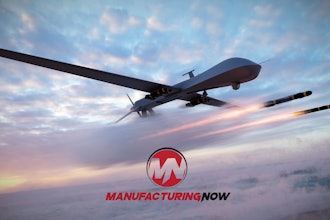
 Brent Halverson
Brent Halverson Long gone are the days when customers would accept sluggish order processing speeds of up to 27 days. With Amazon and other e-commerce giants transforming the B2C customer experience, B2B buyers are also demanding rapid, accurate order cycles, agility and competitive pricing. As a result, we’re seeing this major shift in customer expectations put significant pressure on the traditional distribution model.
In 2017, distributors are searching for new strategies to drive operational efficiency and optimize processes to stay ahead of the competition in the customer service race. Meanwhile, with the infrastructure already in place, they are also looking towards mega e-commerce platforms such as Amazon and Walmart Marketplace to help accelerate their reach into new markets. This more aggressive business approach, however, is putting further stress on their order cycles, meaning technology and automation will take on a new role this year to drive productivity and eliminate the costly errors inherent in legacy systems:
No.1 - Goodbye OCR
Not all automation solutions are created equal. Technology which relies on Optical Character Recognition (OCR) to capture critical data is significantly less accurate than its non-OCR counterpart. Characters like a straight line (i.e. “l”) may be interpreted as the letter I, the letter i, or the number 1. With an average accuracy rate of 95 percent at best for OCR solutions, the chance that your customer receives the wrong part, color, quantity or even pricing for their order, is simply unacceptable if you want to retain customer loyalty.
While some distributors may have the staff on hand to verify orders before they’re finalized, smart companies should explore less error-prone sales order automation in the coming year.
No. 2 - Leverage E-commerce
No one wants to burden customers with extra effort. But that’s exactly what you will do if you insist they use your e-commerce platform for ordering. With the majority of B2B buyers still preferring email ordering over other methods, distributors must look towards new approaches to drive online transactions and justify e-commerce investment in 2017.
Integrating sales automation with your e-commerce technology allows you to direct email order data through the same channel as online orders. In this way, customers can keep their preferred ordering method and you can package the two technologies together, attributing the benefits of their combined powerful features into one spend.
No.3 - Predict the Future
In 2017’s tough economic climate, data will be king. From order flow to customer behaviour, clear visibility across your organization and competitive landscape is now key to maintaining customer satisfaction and sustainable business growth. Tracking and analysing order data through your automation solution, you will be able to identify peak order periods for your products to ensure sufficient stock and optimized marketing. You will also be able to pinpoint order flow bottlenecks and error rates as well as customer order placement preferences, ensuring you implement the correct technology or staffing solution to resolve your problem. Ultimately, this year, data will take the guesswork out of your decision-making.
No. 4 - Meet Machine Learning
It’s the age-old question for the C-suite: how do you do better and more with less? Technology advances such as sales and invoice automation have already delivered substantial benefits for the B2B business, including 95 percent faster processing speeds and an 80 percent reduction in processing costs. But what more can we do?
In 2017, there is a new game changer on the horizon — robotic process automation. Using machine learning to map vast quantities of data, cloud-based RPA solutions will be able to take over time-intensive, error-prone tasks such as purchase order reconciliation without the need for significant IT investment or development. They will also be able to cross-reference and analyze long-term historic order data to identify trends and provide prescriptive recommendations for your sales team, including buying trends and patterns, and new products which are gaining traction. All without the need for human intervention or explicitly programmed instructions. With this new technology approaching, we are going to see ground-breaking innovations in efficiency and cost savings for back office, rules-based workflow in the near future.
In the end, 2017 will be a customer-centric year. Globalization and fierce market competition is going to continue to drive us all to discover new strategies for increasing our efficiency, delivering greater value at lower cost to our customers. By reducing outlay, accelerating processing speeds and eliminating inaccuracies, technology innovation, data analysis and automation are what we must look towards to drive us forward and ahead of the competition in 2017.
Brent Halverson is President & CEO of ecmarket, cloud solutions developer of the patent-pending Conexiom sales order and invoice automation solution. Conexiom allows manufacturers and distributors to focus on serving customers and managing supplier relationships instead of entering data. For more information, visit conexiom.com.






















